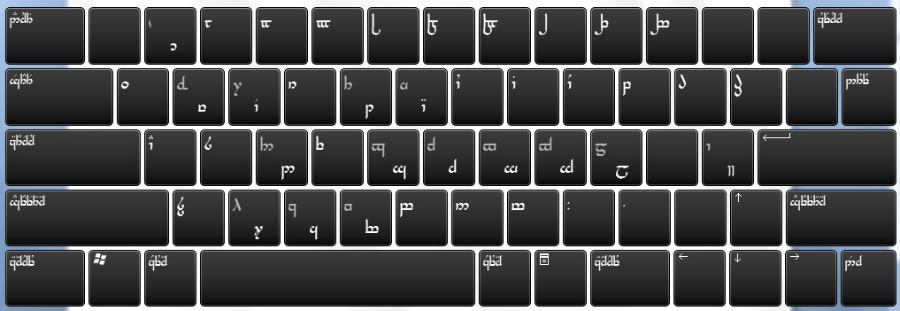Difference between revisions of "Sindarin (font and layout)"
From Conlangs
(Created page with "File:tengwar.jpgTo make proper use of this download, use the keyboard layout and font in conjunction. =Use= Use is relatively straightforward: to type "aran", simply type...") |
|||
| Line 1: | Line 1: | ||
| − | [[File:tengwar.jpg]]To make proper use of this download, use the keyboard layout and font in conjunction. | + | [[File:tengwar.jpg]] |
| + | |||
| + | To make proper use of this download, use the keyboard layout and font in conjunction. | ||
=Use= | =Use= | ||
Revision as of 18:52, 28 January 2014
To make proper use of this download, use the keyboard layout and font in conjunction.
Use
Use is relatively straightforward: to type "aran", simply type "aran", etc. There are some exceptions due to the limitation of Windows's use of keyboard layouts:
- "q" is a W that is relatively unused.
- "W" is voiceless w ([ʍ]).
- "T" is transcribed as TH [θ].
- "I" is a Y that is relatively unused.
- "D" is [ð].
- "x" is a long R.
- "R" is a rolled R. Tends to come before consonants and at the end of words.
- "X" is a different H. Unlike long R, it might actually be common, depending on one's period and transliteration standard.
- "j" is transcribed as NG [ŋ].
- All the letters with a line over top of them that are capital on the keyboard (ie G, H, J) are the equivalent of their lowercase letter but followed by "w". It's sort of a trademark of Elvish languages, so don't forget that "gw" isn't two letters, but one.
Download
http://geckat.conlang.org/conlang/fonts/tengwar%20-%20sindarin.rar
